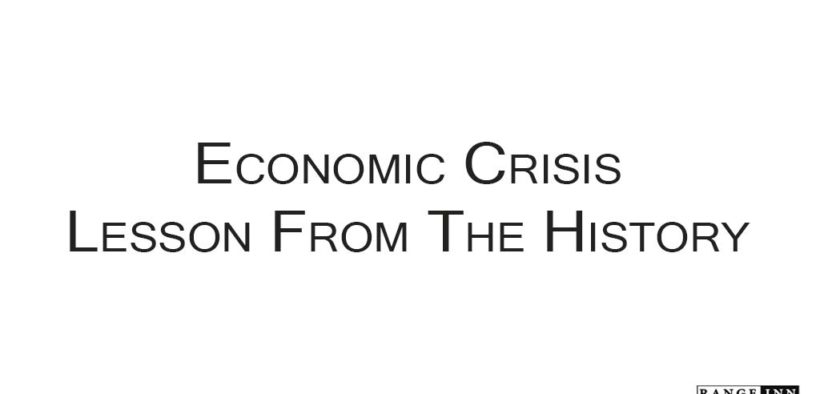Economic Crisis: Lesson from the history

In 1991, India experienced the same economic problems that Pakistan is currently experiencing in 1991. India was on the verge of bankruptcy during that year. India only had $1.2 billion in foreign reserves in 1991. With it, India could only import enough oil to last two to three weeks. As a result of the International Monetary Fund’s adamant refusal to lend, she was unable to even obtain financing from international banks. It did so because the Indian government was reluctant to accept the tough guidelines set forth by the International Monetary Fund (IMF). In order to receive a tranche, the IMF was only willing to provide money to India if it liberalized its economy. The government of India controlled all prices up until 1990, including those for flooring, food, clothing, and other goods. All of this was done to prevent inflation in the nation.
That implies that there were short-term benedictions to not liberating the economy. On the flip side of the coin, the economy was liberated in developed countries. Even in Pakistan, a developing nation, the economy was freed. The worldwide market controls the prices of commodities in these nations. In order to regulate the prices of all goods, the government of India developed a system of licenses. Because of this, the Indian government maintained a tight hold on the economy, but the nation was gradually deteriorating. Its reason was that the socialist theorists have made the most of Indian policies ever since Nehru’s reign. However, its nominal biggest ally, Russia, split in 1991. India’s economy, which had previously benefited from the exchange rate with Russia, has suddenly declined as a result of her need to transact with the rest of the world in dollars. India used to release its budget on February 1st of each year. This is the reason this day is known as India’s Budget Day. But in 1991, India’s sputtering economy prevented it from presenting its budget on budget day. At that time, both Iraq and America prepared to attack Iraq citing Kuwait as a proxy. Due to the closure of all trade channels as a result of this battle, oil prices skyrocketed. The same oil that India used to import for only $5 billion must now be purchased for $12 billion. India’s eyes were awakened by it.
When the economy was at its worst, Chandra Shekhar served as prime minister of India. Along with Congress, he formed a coalition government. That’s why he always took into confidence the chief leader of the congress. i.e., Rajiv Gandhi. In all the important matters of the government. India did not yet have a strong leader who was capable of making judgments on their own on all the crucial topics of the government. In order to receive funding to stabilize the economy, Chandra Shekhar’s administration turned to the IMF. In front of India, the IMF presented a page containing the same old terms. Even though the IMF’s requirements were reasonable and the globe advanced as a result of implementing them, any government that chose to do so ran the risk of losing popularity.
India would suddenly endure such high inflation that the same government might not consider taking office for at least the next 10 years. But there have to be some long-term benefits to that though. However, no political party was willing to accept the immediate loss. India responded in the same way that Pakistan is acting now in that circumstance. Indian representatives went to America to request help in securing the disbursement of funds from the IMF. India and America negotiated in January 1991. Due to their negotiations, the IMF decided to lend money to India. But even though it received funding from the IMF, India was unable to produce its budget. As a result, January and February went by similarly. India had to resume talks with the IMF since it was once again on the verge of bankruptcy. Actually, India had to repay the money she had obtained from other private organizations within 24 hours. Pakistan is currently facing a situation akin to this. When Chandra Shekhar again requested debt relief from the IMF in March, the coalition parties made the decision to abandon Chandra Shekhar’s annex. As a result, his government was overthrown. So, the new elections’ date was made public.
P.V. Narasimha Rao, the president of the Congress, was appointed as the new prime minister. He enforced all the stringent laws that were at the time seen as being against the interests of the nation. India proposed a new budget and new policies that met all of the IMF’s requirements. The negative effects of this choice surfaced in July 1991. The value of the Indian rupee decreased by 11 to 20 percent. Inflation increased once the IMF’s demands were accepted, but the economy progressively became better since foreign investment kept coming in. In other words, employment prospects have also begun to rise in comparison to the weakening rupee. That was the start of what has now elevated India’s economy to the sixth largest in the world, with a value of $3.9 trillion.
Pakistanis should learn from this saga that if a nation with such a massive economy can make such radical reforms, so can we. Although Pakistan’s economy has previously been liberalized, similar significant steps would need to be taken once more to address the country’s current economic issues; otherwise, we should keep in mind that it is the economy of any country that is the most neutral. A mistake in the economy is never forgotten.

The writer is a student at the School of Politics and International Relations at Quaid-I-Azam University, Islamabad.









